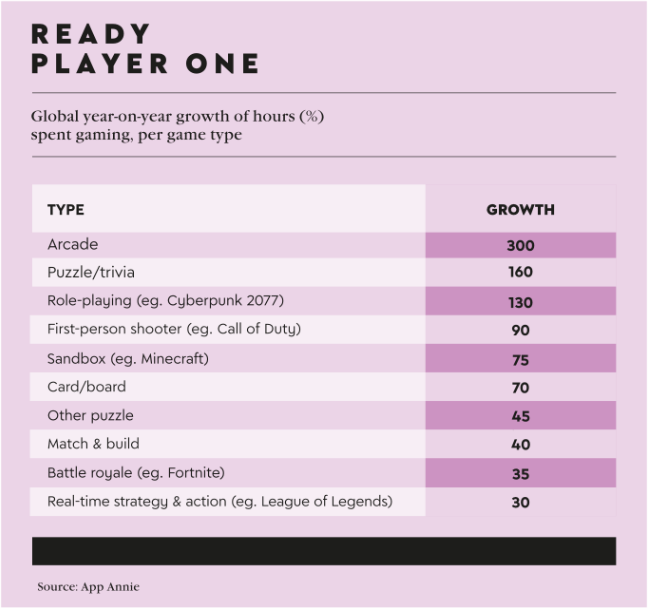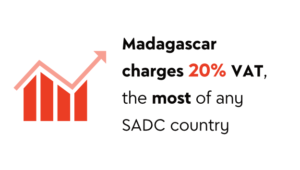It wasn’t all jigsaw puzzles and banana bread. The early months of the COVID-19 pandemic – and, more specifically, the global outbreak of national lockdowns – also saw a surge in another stay-at-home pastime: video gaming.
As early as May 2020, data from market research agency Newzoo was claiming that 2.7 billion gamers around the world would spend a collective US$159.3 billion on games in 2020; with the market predicted to surpass US$200 billion by 2023.
One (very long) year later, in May 2021, Newzoo noted a slight year-on-year decline (with expected global revenues for the year of ‘only’ US$175.8 billion); but highlighted that, ‘when contextualising the games market in 2021, it is important to mention that 2020 was a unique growth year. COVID-19-related lockdown measures spurred enormous interest in gaming across all regions and platforms’.
Or, as Michael Pachter, an analyst at Wedbush Securities, told the Washington Post with a barely concealed shrug, ‘people are at home; they have nothing to do; they are not commuting. You have more time and you’re bored’. (Hinting at the lasting effects of the boom, Pachter added that ‘a person who was playing zero hours a week and they’re now playing one or two, you may have won them over forever’.)

Africa was no exception. In comments to the media, Yugen Naidoo, Lenovo Southern Africa’s consumer business lead, said that video gaming was now one of the fastest- and highest-growing market segments in the consumer personal computer (PC) market in South Africa. According to Naidoo, when President Cyril Ramaphosa implemented a nationwide lockdown in March 2020, Lenovo’s local gaming sales coverage rose by more than 30%. He pointed to Verizon’s finding that global video game internet traffic had increased by approximately 75%, compared to increases of just 12% in digital video traffic and 20% in web traffic.
Much of that growth will – and must – come from untapped markets such as ours. ‘Owing to the maturity of markets in […] Western regions, growing revenues within them is a key challenge for publishers,’ Newzoo Games market lead Tom Wijman writes in a recent blog post. ‘This revenue saturation is why many established game companies in Europe and North America are increasingly paying attention to markets in the Middle East and Africa, and Latin America. These two regions are the world’s fastest-growing in terms of number of players.’
Wijman adds that ‘as is the case every year, the main drivers for player growth in Latin America and the Middle East and Africa are growth in their online population; improving internet infrastructure; and smartphone and mobile internet data plans becoming more affordable’.
Indeed, a recent report by Newzoo and game developer Carry1st shows that the number of sub-Saharan gamers has more than doubled in the past five years (powering up from 77 million to 186 million between 2015 and 2021), and the region is also the fastest-growing globally for both mobile gamers and people who pay to play.

In line with Wijman’s observation, the report says that growth has been accelerated by increasing digitalisation in the region, as well as by the pandemic, and is ‘largely driven by mobile gaming’. According to the report research, 95% of sub-Saharan African gamers play on a smartphone or tablet, as opposed to consoles and computers.
It closely examines five key sub-Saharan African markets, and finds promising levels of market saturation in South Africa (40%), Ghana (27%), Nigeria (23%), Kenya (22%) and Ethiopia (13%). The most important insight, however, is that 186 million of the region’s 1.14 billion people play video games – and of those 186 million, some 177 million (95%) play on mobile devices. This comes at a pivotal moment when, according to analytics company App Annie, mobile gaming worldwide has become more lucrative than home and hand-held consoles (such as PlayStation, Atari and Nintendo Wii or PC).
‘Africa is the future of gaming,’ Carry1st CEO Cordel Robbin-Coker says in the Newzoo report. ‘Thanks to the massive influx of people coming online and a young and dynamic population, gaming in Africa is exploding. Crucially, this applies not only to people playing games, but also those willing to pay as well.’
Mobile platform developer Forest Interactive put a number to that growth, forecasting in mid-2021 that ‘the African gaming industry is expected to register a compound annual growth rate of 12%’ between 2021 and 2026, with the region’s top game developers coming from countries such as Kenya, Nigeria and Uganda.

Those numbers mean opportunity – for developers, brands and related industries across the region. Developers especially have room for growth. Speaking to Forbes Africa, Johannesburg-based gamer Michael Preece says that he’d spent thousands of hours playing hundreds of games across dozens of platforms. Yet only a small percentage of those games were developed in Africa by Africans. ‘The sad reality is that most African-based gaming studios are rather small and don’t develop especially well-known IPs, [they usually develop] indie and mobile games, which, to be frank, aren’t even remotely the biggest markets,’ he says.
Dawit Abraham, founder and CEO of Ethiopia-based mobile game developer Qene Games, sees this gap as an opportunity. He believes the local industry is being held back by a lack of access to mobile-app platforms such as Google Play and Apple App Store; and he thinks telcos could fill that void.
‘I suspect there would be fierce competition among telcos who have been trying to get into the gaming business to try to fill the gap in distribution and sales,’ he says.
For Moses Mbugua, owner of Kenya’s Mesmerise Studios, it all comes down to funding. ‘As game developers, our biggest challenge is getting a market for our games,’ he told AllAfrica. ‘Although many Kenyans play games, very few are willing to spend money on a game, and this [limits] the growth of the industry, limiting its ability to provide job opportunities. […] A lot of work still needs to be done in investing and establishing more game companies that would offer opportunities and experience to game developers.’
What Mbugua didn’t say – but what a handful of tech investors know – is that investment in game development has benefits in other industries and applications as well. Epic Games’ Unreal Engine, which powers popular video games such as Fortnite, Tekken 7 and Tony Hawk’s Pro Skater, is already being used as a virtual reality (VR) tool to explore pharmaceutical drug molecules, to design new buildings and cars, and to support real-time on-screen graphics for news broadcasts.
Gaming’s influence is also being felt in the wild frontiers of cryptocurrency, where ‘GameFi’ (game finance) is emerging as a new buzzword. This technology enables players to earn rewards in the form of non-fungible tokens (NFTs). An example is EtherOrcs, a role-playing game in which each of the game’s more than 5 000 unique characters are their own NFTs, and the code powering the game runs entirely on the blockchain. Players can buy and sell those NFT characters on a marketplace or earn further crypto-backed rewards in a play-to-earn environment. That may sound a world removed from the ragtag gaming studios of Kenya or Uganda, but across the continent major brands are already tapping into the opportunities around mobile games and the innovations that come out of their development.
Speaking to Media Update recently Comic Con Africa show director Carla Massmann praised the ‘amazing talent’ in South Africa’s gaming industry, and highlighted how brands were aligning with developers for game-enabled marketing projects. ‘We have already seen brands do this successfully with the likes of Capitec working with Sea Monster Entertainment and KFC featuring in the locally developed title Boet Fighter,’ she said.
There’s growth in gaming, Massmann said – and that’s being driven by a growing realisation across the board. ‘I think this is because more brands are very quickly learning that the “gamer” is everywhere and in everyone,’ she said, summing up the trend.
‘Gaming is not just that typical teenager at home playing in their room. It is in our everyday life, and we are engaging in some form of gaming in everything we do.’
















